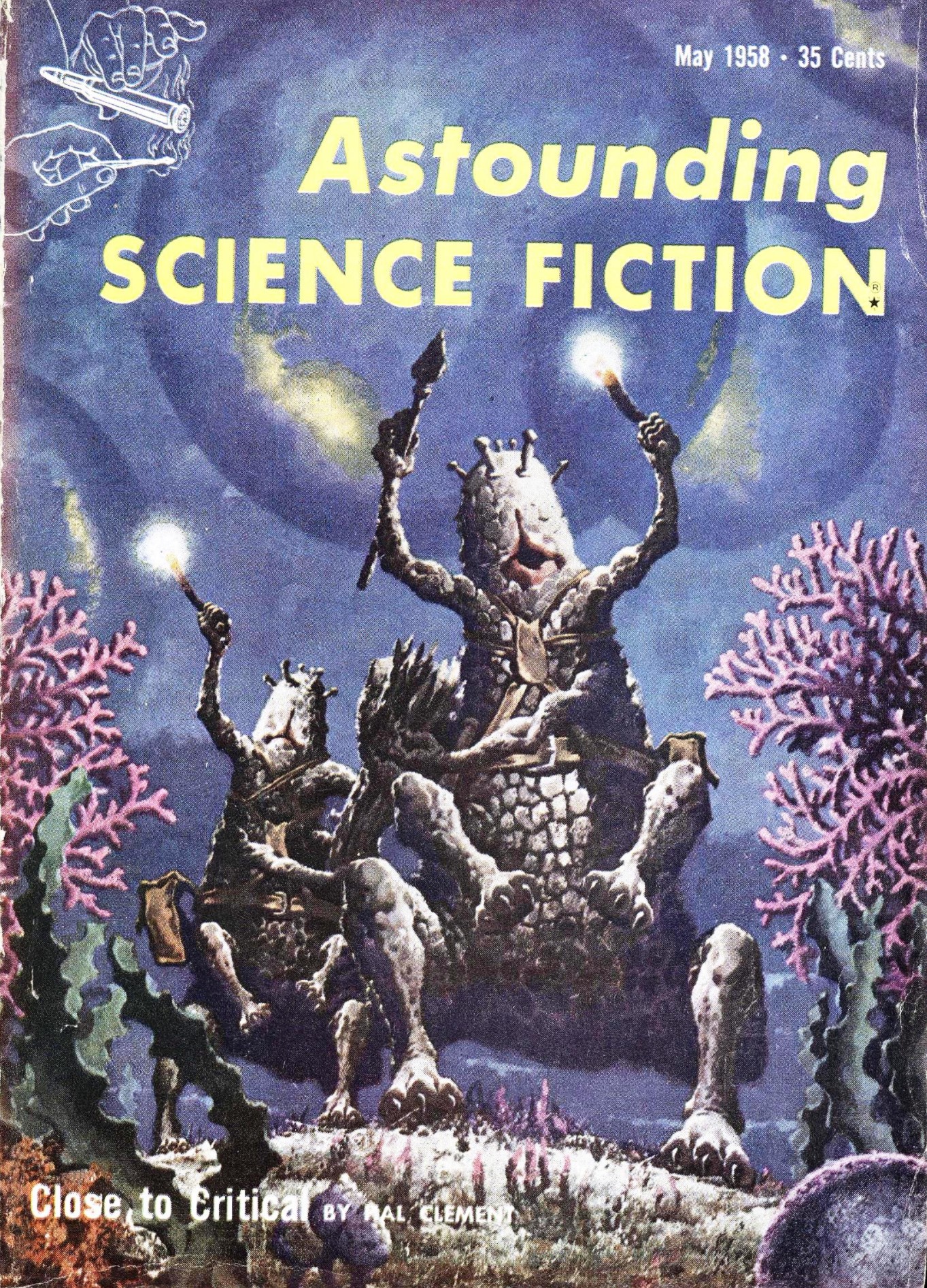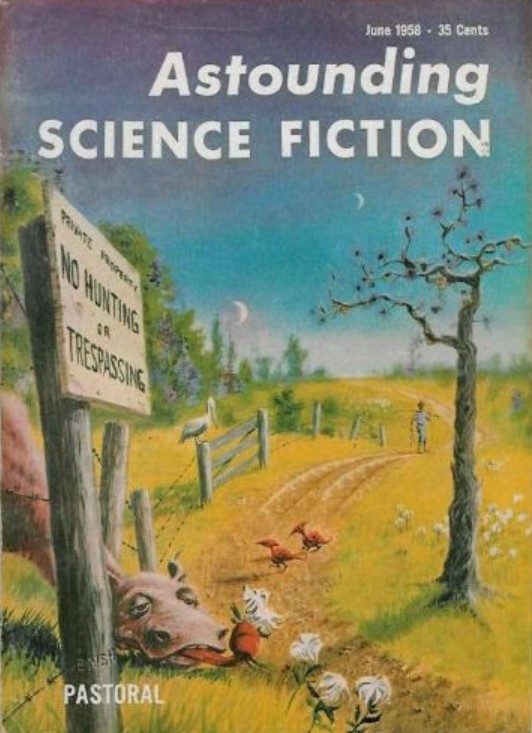dask
dark and stormy knight
The stories as you described them sounded pretty good.

The hardest Astoundings to get are the WW2 and late forties vintage here in the UK, the magazines were used as ships ballast from US to UK so some must have been sunk by u-boats I would imagine, don't know if fewer were printed because of paper shortage in the US which unfortunately killed its sister magazine "Unknown".
The thirties are pretty hard to get as well given the length of time they were printed, sadly they are all slowly disintegrating because of the cheap acidic wood pulp paper used, if not saved there could be stories completely lost because of this, I hope some effort is made to save them like they are doing with the old nitrate stock silent films which have the same problem.
I do have a few of each period but sadly there are large gaps in my collection from that time.
The stories as you described them sounded pretty good.
Indeed:Does anybody have the Analytical Laboratory (poll results) for 1996? I would be interested in seeing the choices.


Best Novella
1 Primrose and Thorn - Bud Sparhawk
2 Symphony in a Minor Key - H. G. Stratmann
3 Fugue on a Sunken Continent - G. David Nordley
4 A Pillar of Stars by Night - Alexis Glynn Latner
Best Novelette
1 The Three Labors of Bubba - Bud Webster
2 Amateurs - Tom Ligon
3 Gerry Boomers - A. J. Austin and Daniel Hatch
4 Martian Valkyrie - G. David Nordley
5 Alexandrian Librarians - Stephen L. Burns
Best Short Story
1 Living It Is the Best Revenge - Ian Randal Strock
2 The Content of Their Character - Doug Larsen
3 Fluffy - Jeffery D. Kooistra
4 When There's a Will, There's a Way - Grey Rollins
5= A Replant Day Carol - John Vester
5= Appointment in Sinai - Ben Bova
I'm interested in this story for several reasons: I like Dickson's work, I have an old paperback of this serial as a short novel, and its the story George Lucas got his idea for lightsabers from (probably). Have the Star Wars related features come to light in the story yet?Second part of the serial Wolfling by Gordon R. Dickson (Wolfling is the term used by the Imperial ruling class for people from Earth). The bullfight makes a big impression on the Emperor and the wolfling James Keil is granted a commission in the Emperor's personal guard. Assisted by his aide-de-camp, Keil begins learning more and more about the Imperium and gets enmeshed in a dangerous power struggle.
Sounds worth a read, thanks. I'm not sure there are other examples of Star Wars foreshadowing from Dickson than the 'lightsabers', but you never know. I think Lucas read Astounding/Analog and got various ideas from different stories, he was a bit of a magpie. It's been suggested he got his idea for Wookies and Chewbacca, from George RR Martin's And Seven Times Never Kill Man, see the Analog cover, below. The one at the back even seems to have a bowcaster!I have several of Dickson's Dorsai novels and always enjoyed reading them. Pity that Dickson never finished the Childe Cycle.
The protagonist of Wolfling, James Keil, is definitely painted with the same brush as a Dorsai ... and the Imperial ruling class appears to share a few traits with the Exotics. I was not aware of the Star Wars - Wolfling connection ... but now you mention it light sabers show up in the final part of the serial. Interesting. And the Imperial troops in Wolfling, the Starkiens ... a foreshadowing of the Stormtroopers?
Going even further down the Dickson connection to Star Wars, what about the unusual abilities of Donal Graeme? A hint of a Jedi warrior perhaps?
And as we see in the third installment of Wolfling, we learn that Keil also has a strange history. And that too reminded me of Donal.
It is a good serial.

Sounds interesting - give it a read and let us know what you think of the contents!I was cataloguing my sf books the other day and I came across an old magazine I bought from a second hand book shop years ago. Not one I'm familiar with, Original Science Fiction from 1960 ed by Robert A. W. Lowndes. I believe that was the year that mag folded. I'll have to photograph the cover tomorrow and upload it. I think its a hard to find mag, never come across another.
| Thread starter | Similar threads | Forum | Replies | Date |
|---|---|---|---|---|
|
|
April Reading Thread | Book Discussion | 129 | |
| P | Editing and Proof Reading | Writing Discussion | 9 | |
|
|
Reading Around in Astounding's Jan. 1953 Basic Science Fiction Library | Classic SF&F | 6 | |
|
|
Reading Around in Robert Arthur's Anthologies | Classic SF&F | 13 | |
|
|
Reading Around in Groff Conklin's Anthologies | Classic SF&F | 200 |
